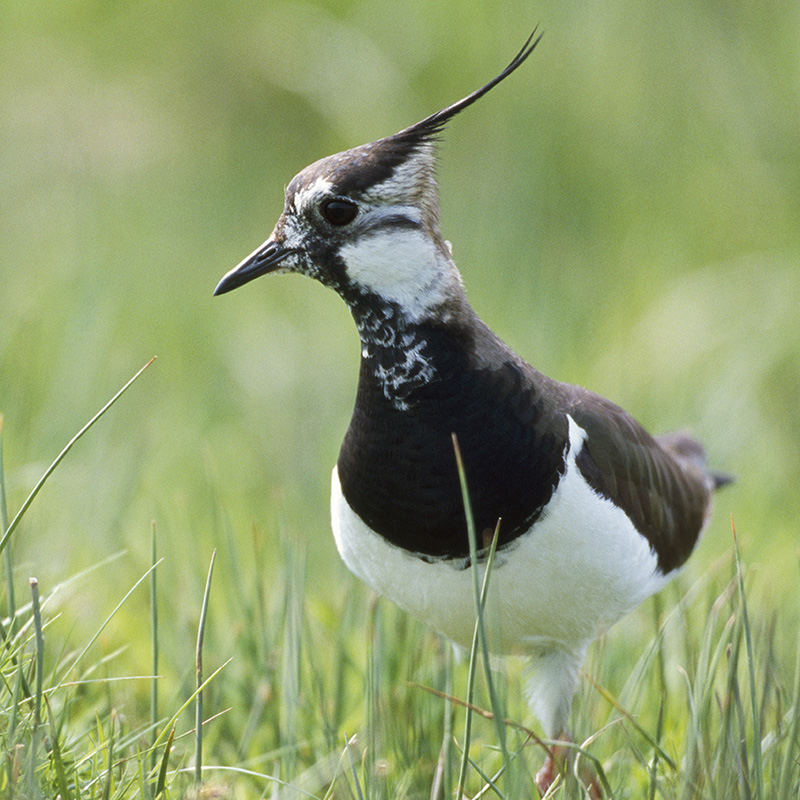Lapwing
Vanellus vanellus
The lapwing is a familiar and recognisable bird of farmlands and wetlands. Identifiable by its long upward-pointing head crest and black and white plumage, it can often look iridescent green and purple in bright sunlight. In flight, they are easily recognised by very broad, round wingtips.
Early in the breeding season, male birds perform dramatic aerobatic displays, flying over their territory slowly and then tumbling down through the air; wings making a humming or lapping sound. Their characteristic high-pitched call (‘pee-wit’) advertises their presence to potential mates.
From early spring, females can be seen on their nests which are often simple shallow scrapes in the mud or sand. In late spring, you may be lucky to spot their cute, fluffy chicks leaving their nests to find vegetation which is more suitable for finding prey.
Lapwings are very protective of their eggs or chicks and will either mob predators or perform a distraction display to lead the intruder away from the nest.
Lapwings are known by many different names including peewit and green plover.
What they eat
Lapwings feed mainly at night on soil invertebrates such as worms, spiders, wood-lice and insects.
Where and when to see them
Lapwing can be seen all year round in the UK.
In breeding season they prefer spring sown cereals, root crops, permanent unimproved pasture, meadows and fallow fields. They can also be found on wetlands with short vegetation. In winter they flock on pasture and ploughed fields.
During breeding season, listen out for its distinctive call, a wheezy mournful ‘peewit’.














